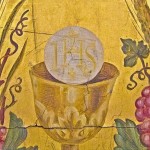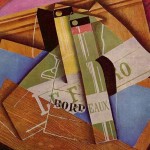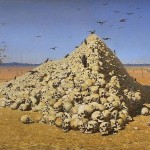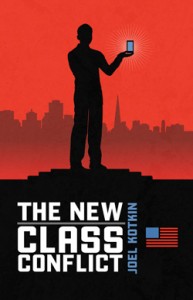
My resistance to the Inklings is strong, but breaking down. Two causes stand behind my aversion.
First, all my dorky church friends in high school–Evangelicals, Mormons, and even some Catholics–spent a lot of their free time talking the greatness of C.S. Lewis. I was alienated from church and their witness frankly didn’t help. Their enthusiasm skipped off of me because at that point I was enjoying the comforts of atheism.
Second, I was also in the process of discovering truly great literature through my AP English class. Old Man Taylor had us reading A Canticle for Liebowitz, The Sound and the Fury, Dante’s Inferno, The Grapes of Wrath, and T.S. Eliot. I mean, how are you going to keep them down on the C.S. Lewis farm after they’ve read Faulkner?
Ever since reverting to the faith at a secular state college the intersection of literature, theology, and contemporary issues has been a constant preoccupation of mine. I recently completed and defended a dissertation on the Catholic imagination of Czeslaw Milosz. I’ve also spent some time commenting on the controversy over the state of contemporary Catholic literature. I stand with Gregory Wolfe against Paul Elie; for those with eyes to see and time to read we are presently in a Golden Age of religiously saturated fiction and poetry. If you need some glasses to better see what’s going on, then see my TOP10 lists about contemporary religious fiction and poetry. While you’re at it peruse all my other award-winning (not really) TOP10 book lists. None of this made me look at the Inklings again.
There was a much more practical motivation behind it. I am the father of three kids under six. Bedtime has a tendency to be a period of whining for the kids and heavy annoyance for the parents. One day, out of desperation, I reached for The Hobbit at the bookstore. It worked. Look up the definition soporific and you’ll find reading around seven pages of the Hobbit as one of the definitions. I think this has something to do with all the walking in the book:
Eventually I discovered that there’s a theologically serious side to the whole book. The Hobbit gives its readers a presentiment that everything that happens, no matter how insignificant, happens for a purpose. I would say there is a providential thread throughout the book. You learn to pay attention to Bilbo’s actions and discoveries. You suspect that they will ultimately be significant, even if you are not sure how, when they actualize themselves fully. It is the case with the ring, but also with a whole host of other details that are too innumerable to list. There’s is a kind of providential penumbra about the book as the characters develop through integrating insights from their experience in a way that would probably give the author of Method of Theology shivers. I picked up on one of these insights some time ago, but then it went into hiding like Smaug.
However, yesterday I ran across an advertisement for the book The New Class Conflict. The book is published by an imprint of the journal that brought the best of critical theory to the United States, Telos. It was founded by a Catholic, Paul Piccone, with roots in (you guessed it!) phenomenology.
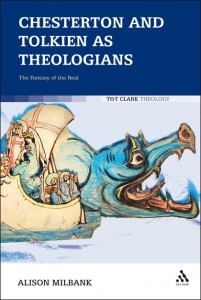
“But, seriously, what does the Hobbit have to do with class conflict?,” you might ask yourself.
Everything. Here’s Smaug, the baddie of the book, speaking upon discovering that the Hobbit reappropiated a golden cup from him:
“Thieves! Fire! Murder! Such a thing had not happened since first he came to the Mountain! His rage passes description – the sort of rage that is only seen when rich folk that have more than they can enjoy suddenly lose something that they have long had but have never before used or wanted. His fire belched forth, the hall smoked, he shook the mountain-roots.”
If you doubt the veracity of this portrayal of what the sinfully rich think, then get a load of this Wall Street Journal letter to the editor. It’s a rich guy claiming that demands for equality lead straight into (NO JOKE!) a Kristallnacht for the richest. In a total deadpan he compares the rich of America to the Jews of World War II Europe.
The quest of Tolkien’s book actually revolves around redressing the unfair hoarding of wealth (coupled with the destruction of the environment… sound familiar?) and returning it back into the common good. Granted, something later in the book or series might complicate the picture a bit, but don’t let that stop me from jumping to conclusions right now. Anyway, hurry, quick, hide the crystal and the Krug Brut!
The inequality that emerges out of the class war the richest fight against the rest of was also a pressing issue to John Paul II, Benedict XVI, and Francis now too. Even if we fail to reform ourselves this side of the eschaton we know with all these popes that there’s a special place for all those Smaug-headed class warriors.
Meanwhile, the super rich arm themselves:


